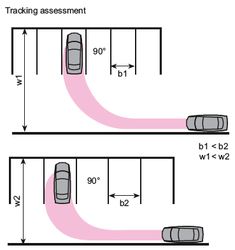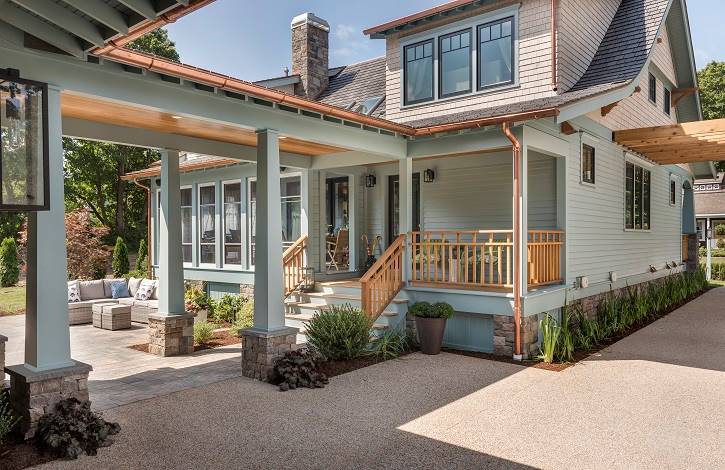
A garage converted to a living area can cost you a lot of money. The cost of converting a garage to living space will vary depending on the property's size and location. For example, if you live in San Francisco, the cost of a garage conversion may be significantly more than you'd expect. However, it is possible to get a significantly lower total cost if your home is in Colorado and Minnesota.
The cost of a garage convert depends on many factors. Get at least three estimates so you can determine exactly how much it will run you.
The average garage conversion cost in the United States is $15,017. Prices will vary depending upon where you live. This amount includes the cost of necessary work such as new windows, flooring, and ceilings. It is also important to include the cost of plumbing or appliances if you are planning on building a kitchen and bathroom.

You will need to do more than just remodel your garage. You'll have to install plenty of windows, replace the floor with leveling cement, and add a few finishing touches, such as ceiling tiles. A general rule is to spend at least $5/square foot on vinyl or laminate flooring, $7/square foot on tile, and $15/square foot for hardwood.
A garage conversion project can be expensive, but it should provide enough value to justify your investment. Even if the goal is not to sell your home, it can improve your resale values. You can make a great investment in a garage to earn rental income. A well-finished garage can double as a guest room, a playroom or home office.
To add to the garage conversion cost, you will also have to factor in the costs for adding insulation, an HVAC system, and plumbing. It is possible that you will need to obtain a building permit in order to begin major renovations. This depends on the jurisdiction. After you have the permits you can begin construction.
Costs of garage conversions can vary depending on where you are located, the features that you choose, the materials used and whether you hire someone to do the work. The value of your new living space will depend on many factors including the market. Some municipalities prohibit garage conversions.

A local contractor is the best way to find out the cost of a garage remodel. The average cost for a garage remodel with two cars is $86 per square foot. A garage with one car is about 240 feet.
FAQ
What should I do about my cabinets?
It all depends on whether you are considering renting out your home or selling it. If you're planning to sell, you'll probably want to remove and refinish the cabinets. This gives buyers the impression that they're brand new and helps them envision their kitchens after moving in.
You should not put the cabinets in your rental house. Tenants often complain about having to clean up dishes and fingerprints from previous tenants.
The cabinets can be painted to look fresher. It is important to use a high quality primer and paint. Low-quality paints can peel off over time.
What is included in a full-scale kitchen remodel?
A complete kitchen remodel is more than just installing a new sink or faucet. There are also cabinets, countertops, appliances, lighting fixtures, flooring, plumbing fixtures, and much more.
Full kitchen remodeling allows homeowners to make small changes to their kitchens. This allows the homeowner to update their kitchens without having to demolish any existing structures, making it easier for the contractor as well.
A kitchen renovation can include a variety of services such as plumbing, HVAC, painting, drywall installation, and electrical. Depending on how extensive your kitchen renovation is, you may need multiple contractors.
It is best to work with professionals who have experience in kitchen remodeling. Kitchen remodels are complex and can be delayed by small issues. DIY kitchen remodels can be complicated. Make sure you have a plan and a backup plan in case of an emergency.
Are you able to spend $30000 on a kitchen renovation?
A kitchen remodel costs anywhere from $15000 up to $35000 depending on what you are looking for. A complete kitchen remodel will cost you more than $20,000. A complete kitchen remodel will cost more than $20,000. However, updating appliances, replacing countertops, or adding lighting can be done for under $3000.
A full-scale renovation typically costs between $12,000 and $25,000 on average. There are ways you can save money without sacrificing on quality. One example of this is installing a sink, instead of replacing the old one. It costs about $1000. A second option is to buy used appliances at half their cost.
Kitchen renovations take longer than other types of projects, so plan accordingly. You don't want to start working in your kitchen only to realize halfway through that you're going to run out of time before completing the job.
You are best to get started as soon as possible. Start looking at options and collecting quotes from various contractors. Then narrow your choices based price, availability, quality, or both.
Once you have identified potential contractors, request estimates and compare their prices. Not always the best choice is the lowest-priced bid. It's important that you find someone with similar work experiences who can provide a detailed estimate.
Remember to include all the extras when calculating the final cost. These may include additional labor, material charges, permits, etc. Be realistic about what you can afford and stick to your budget.
You can be open about your dissatisfaction with any of these bids. Tell the contractor why you don't like the initial quote and offer another chance. Do not let your pride stop you from saving money.
What would it cost for a home to be gutted versus what it would cost to build one?
A home's contents are removed, such as walls, floors, ceilings and plumbing. This is usually done when you are moving into a new home and need to make some adjustments before you move in. Due to so many factors involved in the process of gutting a property, it can be very costly. The average cost to gut home ranges from $10,000 to $20,000, depending on your job.
The process of building a home involves the construction of a house from one frame to another. Next, the builder adds walls, flooring and roofing. This is done usually after purchasing lots. It is usually cheaper than gutting a house and will cost around $15,000 to $30,000.
It comes down to your needs and what you are looking to do with the space. If you want to gut a home, you'll probably need to spend more because you'll be starting over. If you're building your home, however, you don't have to tear everything down and start over. You can build it as you wish, instead of waiting to have someone else tear it apart.
What is the difference between a remodel and a renovation?
A remodel is major renovation to a room, or a portion of a rooms. A renovation involves minor changes to a specific room or part of it. Remodeling a bathroom is a major job, but adding a faucet to the sink is a minor one.
Remodeling involves replacing a complete room or a part of a entire room. Renovating a room is simply changing one aspect of it. Kitchen remodels can include changing countertops, sinks, appliances and lighting. An update to a kitchen could involve painting the walls or installing a new light fixture.
How do I determine if my house requires a renovation or remodel?
First, consider whether your home has been updated in recent times. You might want to renovate if you haven’t had any home updates in several years. If your home appears brand-new, you might consider a renovation.
Your home's condition is also important. You should inspect your home for holes, peeling wallpaper, and broken tiles. A remodel is not necessary if your home appears to be in great condition.
A second factor to consider is your home's general condition. Does it have a sound structure? Do the rooms look good? Are the floors clean? These questions are important when deciding which type of renovation you should go through.
Statistics
- According to a survey of renovations in the top 50 U.S. metro cities by Houzz, people spend $15,000 on average per renovation project. (rocketmortgage.com)
- 5%Roof2 – 4%Standard Bedroom1 – 3% (rocketmortgage.com)
- Following the effects of COVID-19, homeowners spent 48% less on their renovation costs than before the pandemic 1 2 (rocketmortgage.com)
- 55%Universal average cost: $38,813Additional home value: $22,475Return on investment: 58%Mid-range average cost: $24,424Additional home value: $14,671Return on investment: (rocketmortgage.com)
- Attic or basement 10 – 15% (rocketmortgage.com)
External Links
How To
How to Remove Tile Grout from Floor Tiles
Most people don't know that tile grouting exists. It is used in sealing joints between tiles. There are many kinds of grout on the market today. Each type serves a specific purpose. This article will teach you how to remove tile grout off floor tiles.
-
Before you start this process, make sure that you have all the necessary tools. It is best to have a grout cutter, grout scraper, and some towels.
-
Now you must clean any dirt or debris under the tile. The grout cutter can be used to cut the grout and remove any loose tiles. Be careful not to damage any of the tiles.
-
After everything is cleaned up, use the grout scraper for any remaining grout. Step 4 can be completed if you have no grout.
-
Once you've done all of the cleaning, you can move onto the next step. Make sure to take one of the rags out and soak it in water. The rag should be completely dampened. Make sure the rag is completely dry after it has gotten wet.
-
Then, place the wet towel on the joint where tile meets wall. Continue pressing down on the rag until you see the grout begin to fall apart. Slowly pull down on the rag until it is pulled towards you. Continue pulling it backwards and forwards until all the grout has been removed.
-
Continue to repeat steps 4 and 5, until all grout has been removed. Rinse and repeat the procedure if necessary.
-
After you have removed grout, dry the tiles by wiping them with a damp cloth. Let dry completely.